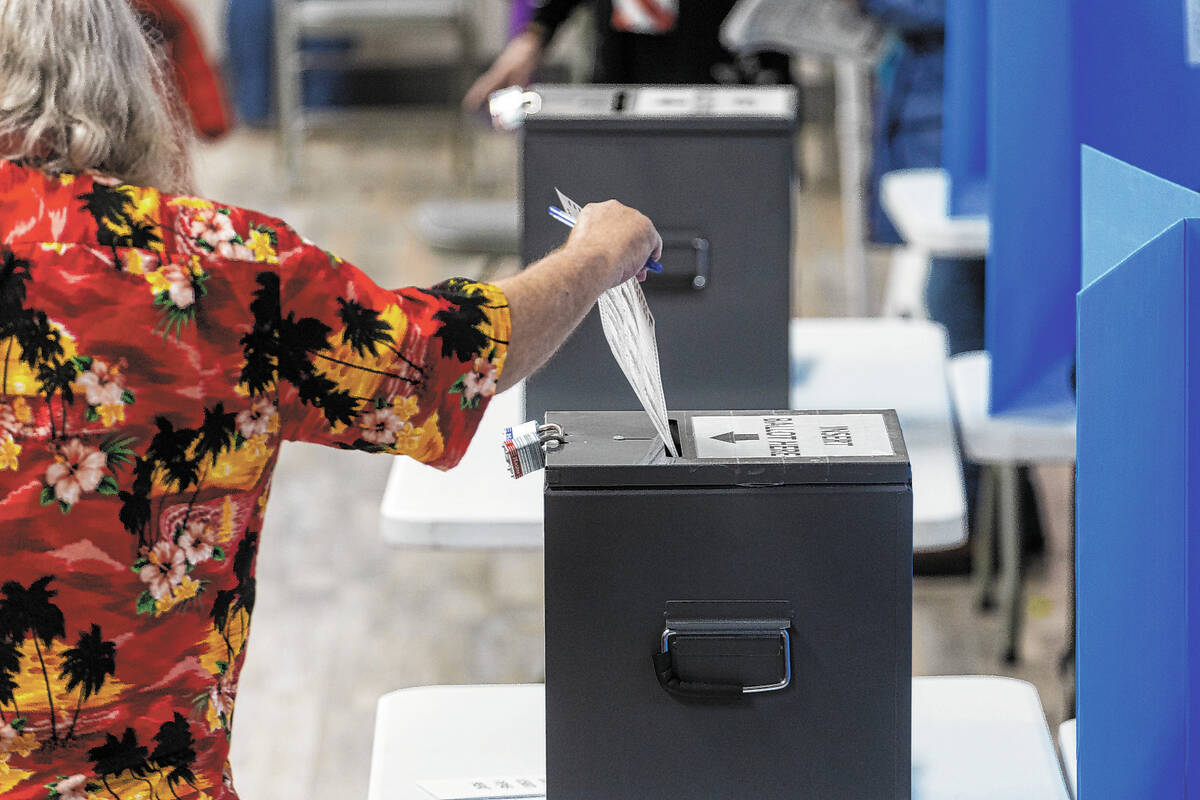
Election Day may be over, but ballots are still being counted across Nevada in the 2022 general election.
Nye County Interim Clerk Mark Kampf said volunteers would be hand counting remaining ballots beginning Thursday morning at the Valley Electric Conference Center in Pahrump.
“We are under pressure to complete this process by Nov. 17, which does not leave us much time,” he said earlier this week, while urging volunteers to join the hand-count efforts here.
While we’re waiting for final, unofficial results, here are three takeaways about what we know so far:
1. There’s no such thing as election night: Ever since the COVID-19 pandemic, Nevada’s elections have changed in one significant way: There’s no longer a way to know who won on the night the election is held. That’s because under rules first passed in special session — and later made permanent in the 2021 cycle — every active registered voter is sent a mail-in ballot. And so long as those ballots are postmarked by Election Day and received by Nov. 12, they will be counted.
The upshot: Close races can’t be called sometimes until days later. So now, it’s election week. And that can lead to races that appear to be heading one way but end up going the other. That’s not evidence of cheating; it’s evidence of counting.
2. Republicans vote one way, Democrats another: Republicans clearly prefer to vote in person, either during early voting or on Election Day, while Democrats choose to use mail ballots, especially those Republicans who live in the state’s urban areas.
A look at Clark County’s most recent mail voting totals shows 131,528 mail ballots cast by Democrats, with just 66,021 cast by Republicans, a 2-to-1 advantage for Democrats. (Nonpartisans were at 75,114.) Washoe County showed a similar trend, albeit not as dramatic: 34,890 Democrats used mail to vote as of Monday, while 24,352 Republicans did. Nonpartisans trailed with 20,109.
But a look at the statewide early voting numbers shows that 86,517 Democrats turned out to vote in person during the two weeks when polling places were open, compared with 138,593 Republicans. Nonpartisans represented 41,782 in-person early votes.
Part of the reason for that is the Republican belief that in-person voting is more secure than voting by mail, although both methods are equally accurate and safe. But at an in-person polling place, voters can see not only their selections on a touch screen, but also on the paper receipt that’s printed before each ballot is cast. And some Republican leaders, including former President Donald Trump, have encouraged their supporters to vote in person rather than by mail.
In Republican-dominated Nye County, 11,561 voters (34 percent) cast ballots by mail, according to local election officials. About 4,095 people (12 percent) voted early in-person at polling sites set up in Duckwater, Pahrump and Tonopah. About 2,443 voters (7 percent) cast votes in-person on Election Day.
More than 53 percent — or 18,089 of Nye County’s 33,796 registered voters — cast ballots in the mid-term elections, according to data from local election officials.
3. Question 3, Part II: This time it’s serious: Of the trio of statewide ballot questions, Question 3 — the open primaries/ranked choice election initiative — was leading with the smallest percentage of the vote as of Thursday afternoon.
Although a majority of Nye County voters seem to be rejecting the measure so far, the statewide “Yes” votes had 51.84 percent to 48.16 “no” votes, a margin of nearly 25,000 votes. If that lead holds, the measure is headed for the general election of 2024, part of Nevada’s “are you sure?” constitutional amendment procedure.
And that means critics of the measure — who say it’s confusing, potentially disenfranchising and violates of the right to associate with political parties — will have another two years to attack Question 3 and persuade voters to reject when it’s back on the ballot. That’s actually happened before, with another measure named Question 3. The previous measure would have radically changed Nevada’s energy market and passed overwhelmingly with 72.4 percent in 2016, but just two years later lost overwhelmingly, with 67 percent opposed.
That two-year turnabout, probably the widest swing in Nevada initiative history, was because of an extremely effective campaign waged against it. So bet that you have not heard the last about the current version of Question 3. (See more about the ballot questions on page A4.)
Contact Steve Sebelius at SSebelius@reviewjournal.com or 702-383-0253. Follow @SteveSebelius on Twitter.
Brent Schanding contributed to this report.